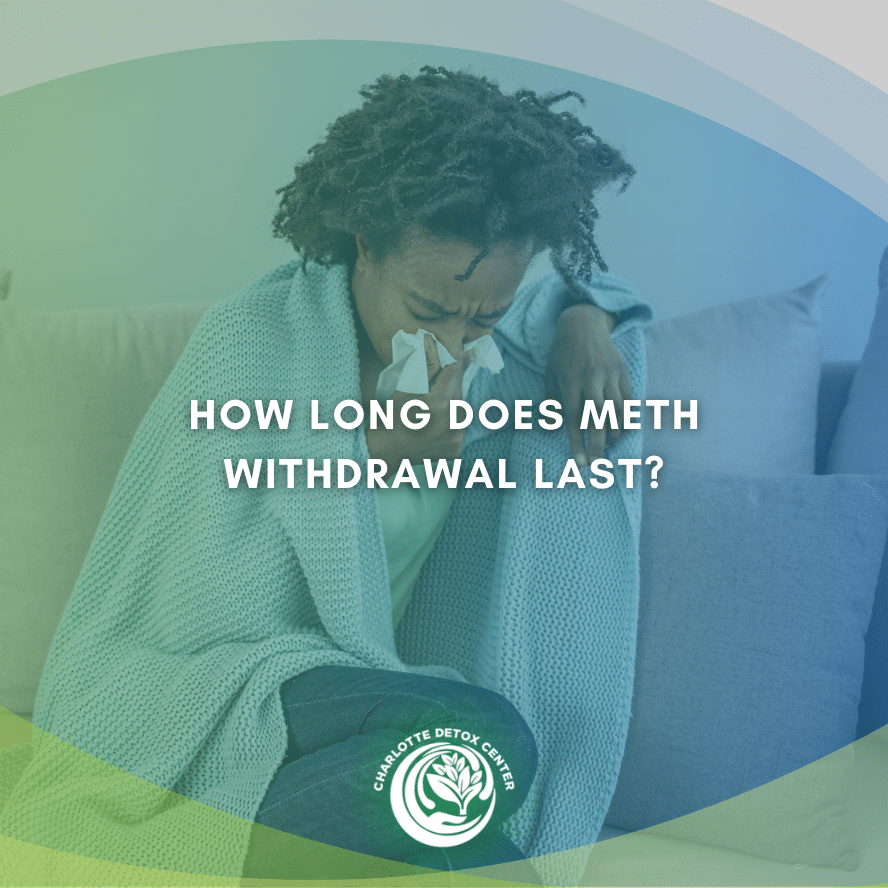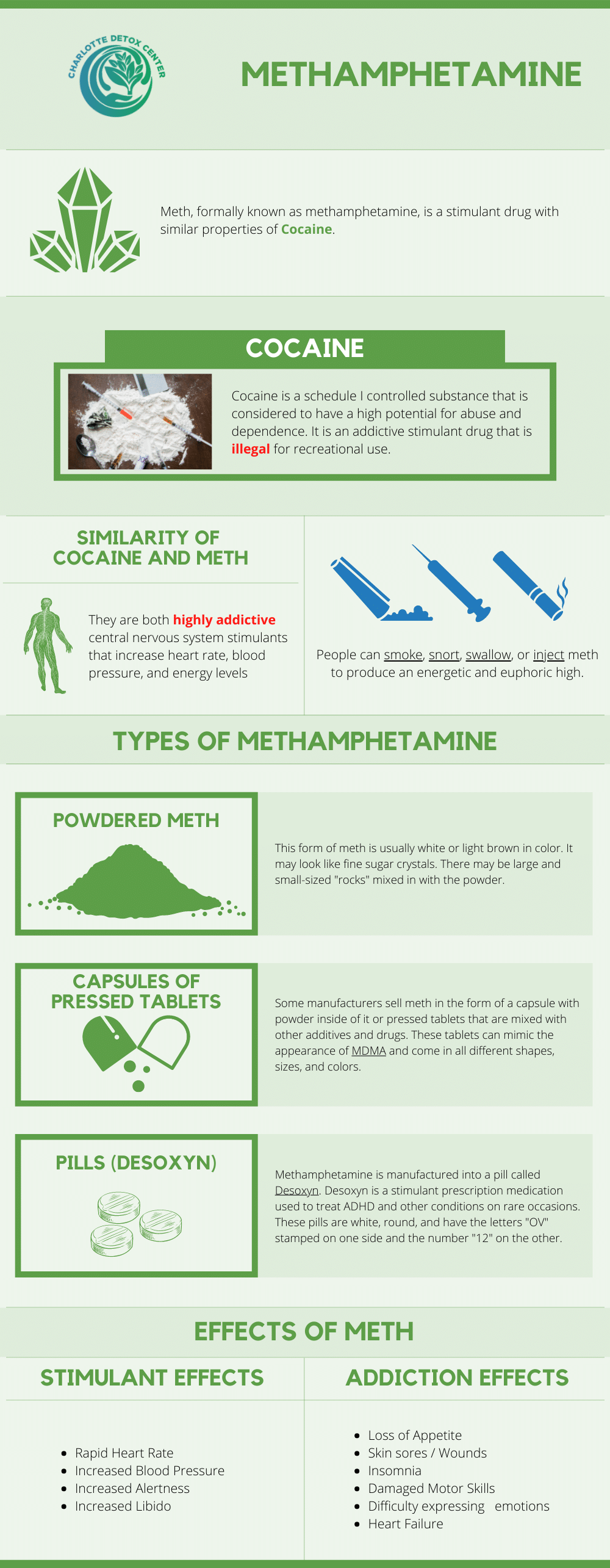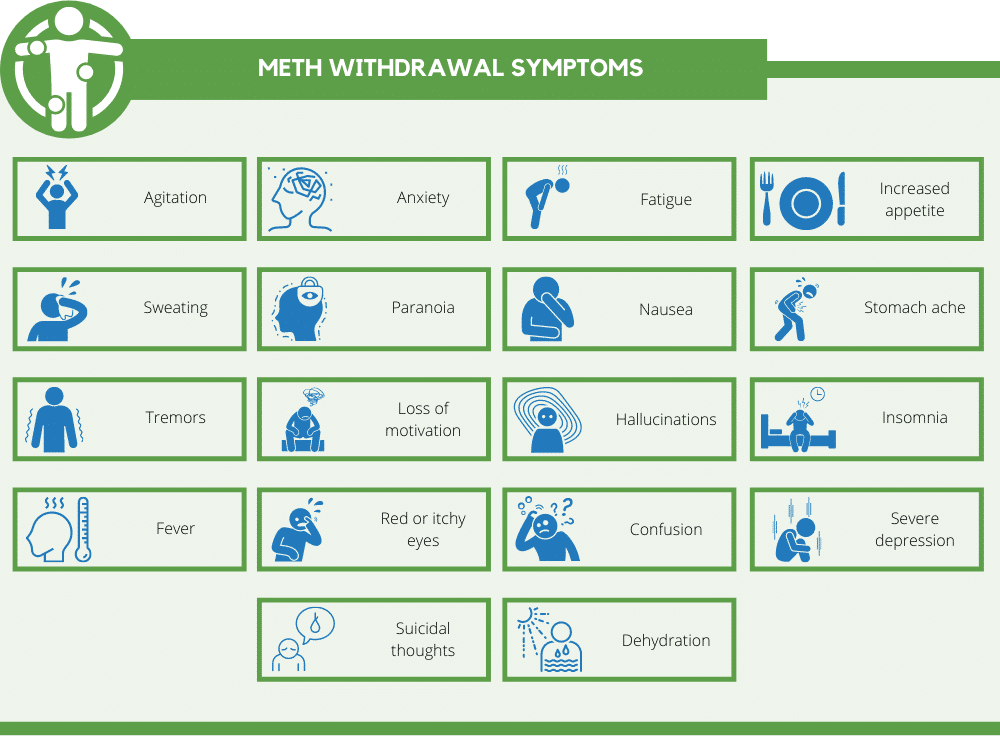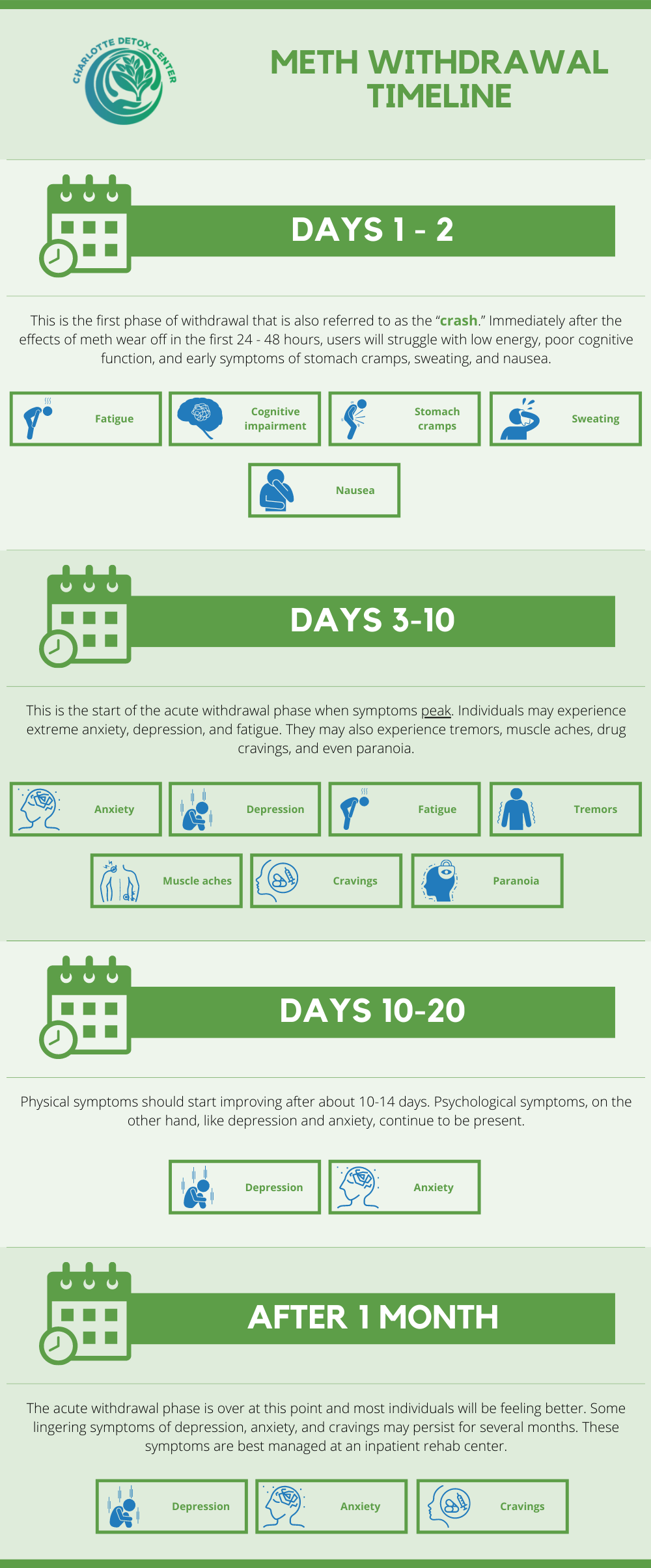How Long Does Meth Withdrawal Last?

Medically Verified: 2/1/24
Medical Reviewer
Chief Editor

All of the information on this page has been reviewed and verified by a certified addiction professional.
Meth is an addictive and powerful stimulant drug that gives people a long-lasting boost of energy and euphoria. It does this by increasing levels of dopamine in the brain. However, this sudden increase of dopamine feels good, so it reinforces drug-taking behaviors. As a result, people who continue taking meth will need to start taking increasing doses to feel the effects they are seeking. Then, when these individuals try to stop taking meth, the brain is unable to produce dopamine on its own.[1] This phenomenon results in irritating meth withdrawal symptoms.
Anyone who abuses meth for any period of time knows that the “crash” or “comedown” that occurs when the high wears off is unpleasant, but the withdrawal symptoms can feel even worse. Before entering a detox program, many people wonder how long meth withdrawal lasts and what it will feel like. Understanding the meth withdrawal timeline and symptoms can help prepare people for what to expect.

Meth Withdrawal Symptoms
The symptoms a person experiences when quitting meth may vary as will the severity and duration of those symptoms. In general, the longer a person has been addicted to meth, the more severe his or her symptoms will be.
Common symptoms of meth withdrawal include:[2]

- Agitation
- Anxiety
- Fatigue
- Increased appetite
- Sweating
- Paranoia
- Nausea
- Stomach ache
- Tremors
- Loss of motivation
- Hallucinations
- Insomnia
- Fever
- Red or itchy eyes
- Confusion
- Severe depression
- Suicidal thoughts
- Dehydration
Factors That Influence How Long Meth Withdrawal Lasts
There are many different factors that affect the meth withdrawal timeline. All of these factors can contribute to both the severity of symptoms and how long they last. The first is how long a person has used meth. The longer the body has been exposed to meth and more frequently, the more severe and long-lasting the withdrawal symptoms will be. Other external factors can influence how long meth withdrawal lasts, including:
- Method of administration
- Potency of methamphetamine
- Polysubstance use
At the same time, there are several unique physical and metabolic factors that influence meth withdrawal. For instance, people with slower metabolisms (such as people who are older or overweight) will need more time to clear meth from their body, causing withdrawal to last longer. Other physiological factors include:
- Co-occurring health conditions
- Liver and kidney function
- Immune system
- Metabolism
- Hydration
- Overall health
Some people choose to stop using meth all at once. This is referred to as “cold turkey.” The cold turkey method is known to produce more severe withdrawal symptoms, but a shorter withdrawal timeline. Another method for detox is called “tapering.” Tapering involves slowly reducing a person’s dose so their withdrawal symptoms aren’t as severe. Tapering, however, can extend the withdrawal timeline for several weeks or months.
Meth Withdrawal Timeline
How long meth withdrawal lasts depends highly on the above-listed factors. However, physical symptoms of acute withdrawal tend to peak after 2-3 days and begin to subside after one week. Other symptoms, such as depression, mood swings, and cravings, can last for several weeks or months after quitting meth.

Here is a general timeline of what to expect during meth withdrawal:
- Days 1-2: This is the first phase of withdrawal that is also referred to as the “crash.” Immediately after the effects of meth wear off in the first 24-48 hours, users will struggle with low energy, poor cognitive function, and early symptoms of stomach cramps, sweating, and nausea.
- Days 3-10: This is the start of the acute withdrawal phase when symptoms peak. Individuals may experience extreme anxiety, depression, and fatigue. They may also experience tremors, muscle aches, drug cravings, and even paranoia.
- Days 10-20: Physical symptoms should start improving after about 10-14 days. Psychological symptoms, on the other hand, like depression and anxiety, continue to be present.
- After 1 Month: The acute withdrawal phase is over at this point and most individuals will be feeling better. Some lingering symptoms of depression, anxiety, and cravings may persist for several months. These symptoms are best managed at an inpatient rehab center.
Detoxing from meth isn’t easy. It can even be dangerous as there are many risks associated with meth withdrawal. As a result, the best way to detox is to do so at a qualified medical facility. Medical detox centers in Charlotte, North Carolina can provide nutritional, medical, and psychiatric support around the clock to help patients avoid serious complications.
Find a Meth Detox in Charlotte, North Carolina Today
Rather than focusing on how long meth withdrawal lasts, it’s more important to focus on obtaining quality medical care and supervision during the detox process. Meth withdrawal can lead to serious complications, like dehydration, paranoia, angry outbursts, hallucinations, and even suicidal tendencies. However, meth detox centers in Charlotte, NC can provide the care and supervision needed to keep individuals safe and comfortable as they begin their sobriety journey.
To learn more about our drug and alcohol detox program or to find help for meth addiction in your area, pick up the phone and give us a call today. We can’t wait to help you find the help you deserve.
References:
